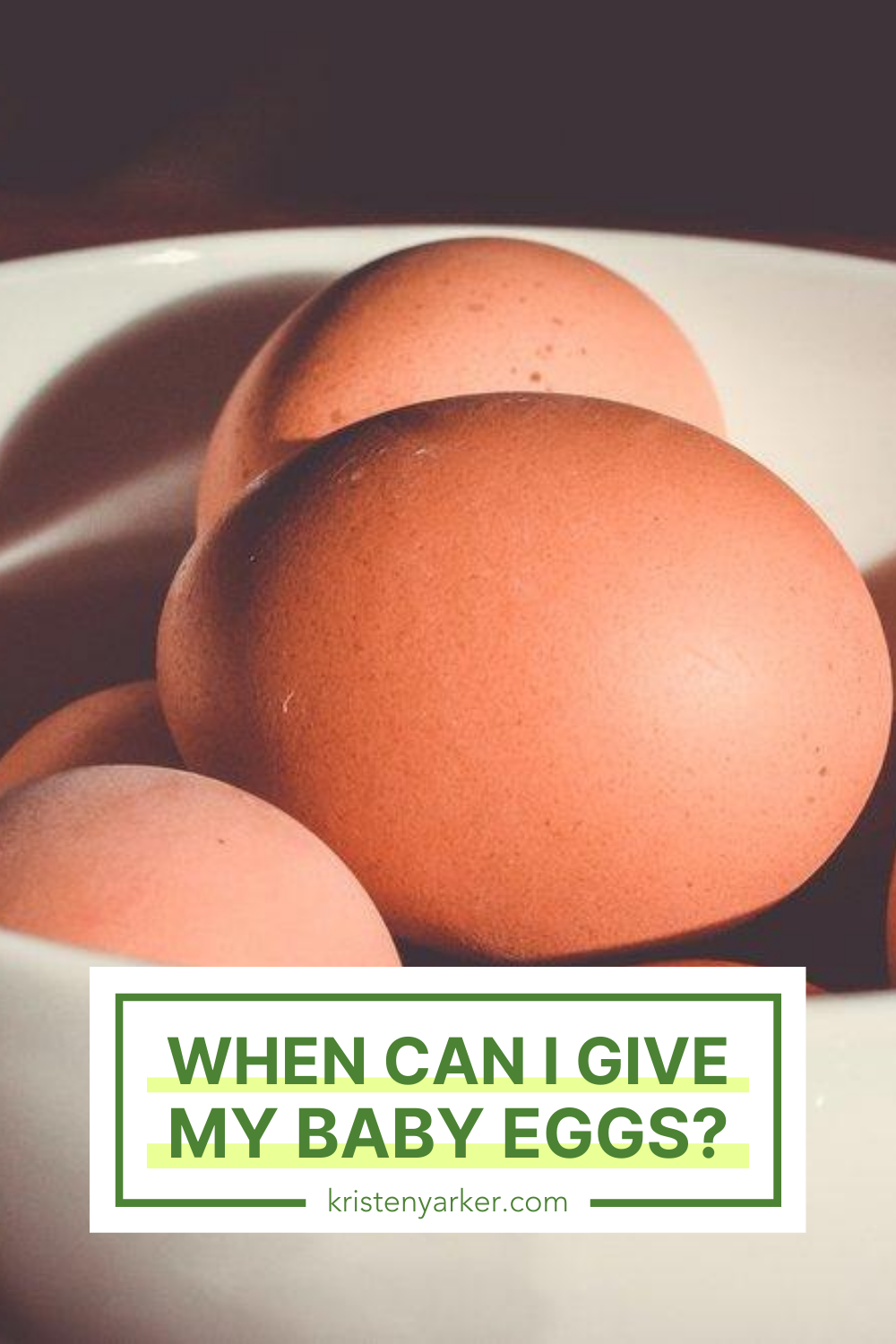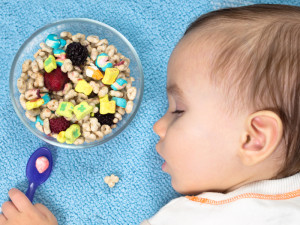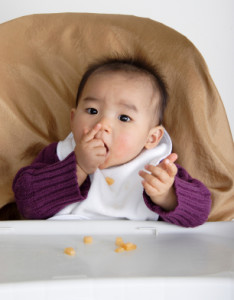Pretty much all babies gag sometimes when then they first start eating solid foods. But, some babies gag more than others. Baby gagging can be very frightening for moms and dads and I get a lot of questions about it when I lead my Introducing Solid Foods workshops. I know that you are busy and exhausted so you like my blog posts short and to-the-point. If you’re really nervous about introducing your baby to solid foods, and/or are looking for a more fulsome description of gagging versus choking, I recommend coming out to one of my in-person workshops or getting in touch with me to find out more!
The focus of this post is on how to help babies who gag a lot to become less gaggy so that they can be more successful at eating solid foods.
For this tip, I’m assuming that you’re starting solids in that ‘just right’ window of about 6 months old. And, that your health professional has ruled out any medical cause for your baby’s gagging.
It’s often said that some babies have a “sensitive gag reflex”. But for most babies this isn’t the case. It’s not that their reflex is too sensitive, it’s that it’s in the wrong place.
You see, babies and adults have different mouth physiology. In adults, the majority of our tastebuds are on the tip of our tongues and our gag reflex is way in the back of our mouths. A fun way to test this is to place food in different parts of your tongue and notice how differently it will taste.
In babies, the majority of their tastebuds are at the very back of the mouth and their gag reflex is at the front of their mouth. This makes sense because for the first months of life babies are nipple-fed (either breastfed or bottle). To feed, babies place nipples to the very back of their mouths. So Mother Nature has the tastebuds at the back, where baby will taste their breastmilk/formula. The gag reflex is at the front of the mouth where it’s out of the way for nipple-feeding and where it protects babies from putting items in the front of their mouths that they could choke on.
Starting at about 4 – 6 months, the gag reflex and tastebuds migrate in opposite directions to swap places into the grown-up positions.
Most gaggy babies don’t have overly sensitive gag reflexes. Instead, their gag reflexes are still too far forwards.
What stimulates the gag reflex to move backwards? Having things in your baby’ mouth. Particularly things that your baby can stick towards the back.
So, your baby sticking their hands (and feet) in their mouth is really them working to move their gag reflex backwards. So is mouthing Sophie the Giraffe and other chewable toys that babies can stick deeper into their mouths. Toys like teething rings that stay at the very front of their mouths won’t help because it’s the presence of things ever deeper into your baby’s mouth that stimulates the backwards movement of their gag reflex.
So what’s the 1 tip to help baby gagging?
Let them play with toys they can safely stick in their mouths.
Now to be clear, I’m not recommending that you allow your baby to chew on things that they can choke on. I said “safely stick in their mouths”. What I’m recommending is to allow your baby to play with chewable toys and other objects that can safely go further back in their mouths. You want to look for long things that your baby can’t get a bite off of. Examples include:
- Their own hands (and your fingers).
- Sophie the Giraffe.
- Toy key rings.
- The spoon that you feed your baby with.
- Whole, big, raw carrots or parsnips (big enough in diameter that your baby can’t bite off a chunk).
- Ice cubes in a mesh feeding bag (I only recommend plain water ice cubes, not frozen foods).
Given the opportunity, babies will do lots of chewing on these objects. Know that they’re not just playing. They’re playing with a purpose. Playing is their job at this age. Your baby is playing with the purpose of developing the skills to eat.
















 {
{
 I shared this post previously with the
I shared this post previously with the  {Guest post I contributed to the
{Guest post I contributed to the  Thank you to the parent at a recent workshop in Victoria BC who asked this baby feeding question: "What does it mean when I see whole pieces of food in my baby’s poop?" It’s amazing the topics of conversation that you have once becoming a parent, eh?!
This Mom had recently started feeding her baby finger foods and was seeing pieces of food in her baby’s diaper. It’s often not talked about, but when you start to feed your baby solid foods, you will see a change in their bowel movements.
Thank you to the parent at a recent workshop in Victoria BC who asked this baby feeding question: "What does it mean when I see whole pieces of food in my baby’s poop?" It’s amazing the topics of conversation that you have once becoming a parent, eh?!
This Mom had recently started feeding her baby finger foods and was seeing pieces of food in her baby’s diaper. It’s often not talked about, but when you start to feed your baby solid foods, you will see a change in their bowel movements. {Guest Post at
{Guest Post at 